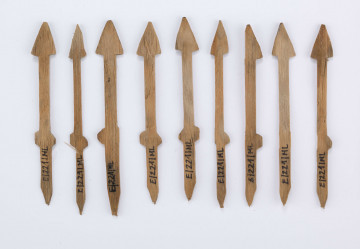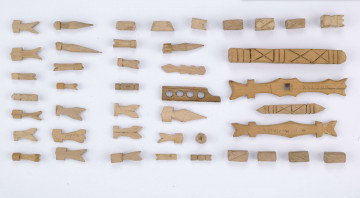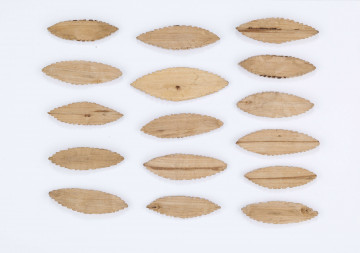
Game `Pick-up Sticks`
1901 — 1920
National Museum in Lublin
Part of the collection: European classics of modernity
Tymon Niesiołowski, a student of the Lviv Industrial School (1898-1900) and the Academy of Fine Arts in Kraków (1900-1904), owed his first contact with avant-garde currents in art to Władysław Ślewiński, a member of the Pont-Aven school. Niesiołowski's participation in the Formist movement (1917-1922) was marked by experiments in the construction of paintings, but from the mid-1920s the artist's interest in the new classicism grew, and in the following decade - in colourism. Changes in the place of residence were connected with receiving positions as a lecturer at art academies: from 1919 - the Free School of Fine Arts in Zakopane, from 1926 - the School of Arts and Crafts in Vilnius and from 1928 - the local Faculty of Fine Arts at the Stefan Batory University and from 1945/1946 - the Nicolaus Copernicus University in Toruń. Influenced by the Viennese Secession and the works of Paul Gauguin, Niesiołowski's inclination to use decorative line in painting, drawing and graphic compositions remained with him until the end of his life, although at different stages he followed a different style. In the painting Szachiści [Chessmen] from 1949, the artist broke for a moment with Henri Matisse's arabesque and, like most Polish moderns in the period of the so-called pre-Stalinist interregnum, was inspired by Pablo Picasso's thick, severe black contours and muted colour palette, which characterized the work of the titan of modernism from the late 1930s throughout the war period. Paintings in this style, picked up by a wide Parisian circle, could be seen at exhibitions of French painting in Warsaw, Krakow and Poznan in 1946. A similar source, classically modern, was the theme of the players immortalised by Niesiołowski at the time, alongside clowns, acrobats and circus scenes.
Szymon Piotr Kubiak
Author / creator
Dimensions
cały obiekt: height: 58 cm, width: 80 cm
Object type
painting
Creation time / dating
Creation / finding place
Identification number
Location / status

1901 — 1920
National Museum in Lublin

1901 — 1920
National Museum in Lublin

1901 — 1920
National Museum in Lublin
DISCOVER this TOPIC
Castle Museum in Łańcut
DISCOVER this PATH
Educational path